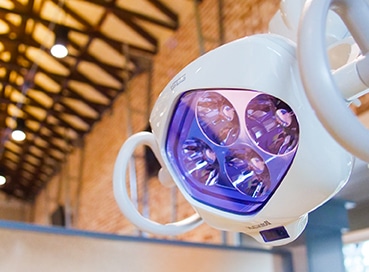Little Known Questions About Orthodontics.
Little Known Questions About Orthodontics.
Blog Article
Some Known Factual Statements About Orthodontics
Table of ContentsGetting My Orthodontics To WorkExcitement About OrthodonticsSome Known Factual Statements About Orthodontics The Best Guide To OrthodonticsWhat Does Orthodontics Do?The 5-Minute Rule for OrthodonticsThe 6-Minute Rule for Orthodontics
You might feel some pain for some time when your dental braces are first placed on and when they are readjusted (Orthodontics). It will take a little time to get utilized to your braces and they can trouble your lips and cheeks. If this takes place, an alleviation wax can be related to your bracesIt is vital to clean your dental braces along with the front, back and chewing surfaces of the teeth. Your dental practitioner or orthodontist will certainly give you pointers on exactly how to brush and on exactly how to floss using floss threaders. After flossing, roll it up in a little ball and placed it in the garbage.
Little Known Questions About Orthodontics.
Moms and dads should monitor their youngsters to ensure they do a great work cleaning their teeth and braces and follow the advice of their dental professional or orthodontist. If you have braces, do not attack on difficult things such as ice cubes and nuts. Do not chew completions of pens or pencils.
It overviews the instructions of tooth movement and jaw growth in a person who is still growing. There are various sorts of headgear and they might be used during any type of part of the orthodontic treatment. Your orthodontist or dental practitioner will certainly show you how to place on the headgear and tell you for how long to use it each day.
Little Known Facts About Orthodontics.
They might require to be used at all times or part of the moment. Tooth elimination might be required if your teeth are crowded or if a tooth is badly out of position. Jaw surgical procedure (or orthognathic surgery) might be needed when there are significant distinctions in the dimension or position of the top and reduced jaws.
An orthodontist is a dentist educated to identify, protect against, and treat this post teeth and jaw abnormalities. They remedy existing conditions and are educated to determine problems that might create in the future. Orthodontists collaborate with individuals of any ages, from children to grownups. People often connect an excellent smile with health.
Orthodontic residency programs offer intensive, concentrated direction for dental experts. They focus on 2 locations: Just how to effectively and safely relocate teeth right here Just how to properly assist growth in the teeth, jaw, and faceOnce an orthodontist has finished training, they have the alternative to become board certified.
The Facts About Orthodontics Uncovered
Imbalance, or malocclusion, is the most common reason people see an orthodontist. It is genetic and is the result of size distinctions in between the top and lower jaw or between the jaw and teeth. Malocclusion leads to tooth overcrowding, an irregular jaw, or irregular bite patterns. Orthodontics. Malocclusion is usually treated with: Your orthodontist affixes steel, ceramic, or plastic square bonds to your teeth.
If you have just minor malocclusion, you might be able to utilize clear braces, called aligners, rather than traditional dental braces. Some people need a headwear to help relocate teeth into line with stress from outside the mouth. After braces or aligners, you'll require to wear a retainer. A retainer is a personalized device that keeps your teeth in place.
They can create you can try these out additional area in the mouth without having to pull teeth. If you have a serious underbite or overbite, you could require orthognathic surgical treatment (likewise called orthodontic surgical treatment) to extend or reduce your jaw.
The Basic Principles Of Orthodontics
During your initial orthodontic examination, you'll likely have: An oral examPhotos taken of your face and smileDental X-raysPanoramic (360 degree) X-rays of your face and headImpressions to produce molds of your teethThese examinations will help your orthodontist know how to proceed with your therapy. An orthodontist is a dentist that's had training to treat your teeth and jaw.
An orthodontist is focused on your bite, so something like a damaged tooth would be managed by a dental professional. Orthodontists are concentrated on your bite, or the method your teeth fit with each other, and the straightness of your teeth.
Orthodontics - Truths

Orthodontic therapy is known for its capability to transform smiles, yet its advantages extend beyond plain aesthetic appeals. Some of these benefits are: One of the considerable orthodontic home appliances is that it initiates a transformative process past tooth positioning.
Some Ideas on Orthodontics You Should Know
Meticulous alignment decreases the tendency for teeth to move or relapse post-procedure. This positioning conservation makes sure that the investment in orthodontic treatment yields sustaining benefits for many years. Orthodontic treatment has actually evolved considerably, offering a spectrum of therapy methods customized to specific needs and choices. From conventional braces to discreet clear aligners like Invisalign, individuals can access varied alternatives that straighten with their way of life and aesthetic preferences.
These modifications are crucial for preserving progress and ensuring the treatment remains on track according to the established strategy. The orthodontist creates an individualized procedure strategy based on the diagnostic records and the patient's special demands and choices. This plan outlines the suggested action to address the identified orthodontic issues and achieve the preferred outcome.
Report this page